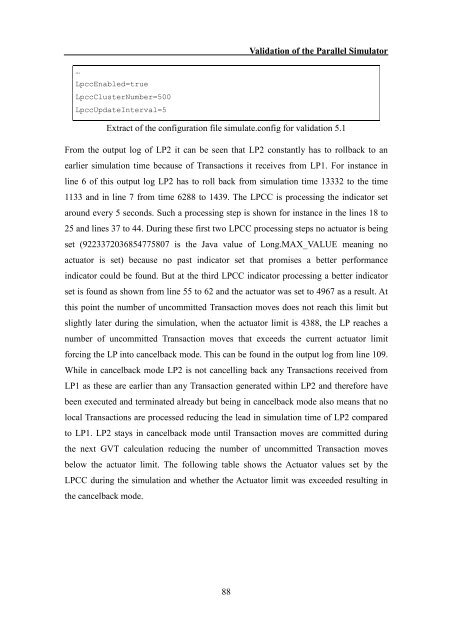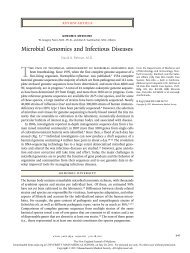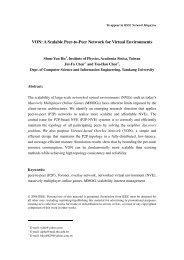3.1 MB - Evernote
3.1 MB - Evernote
3.1 MB - Evernote
You also want an ePaper? Increase the reach of your titles
YUMPU automatically turns print PDFs into web optimized ePapers that Google loves.
…<br />
LpccEnabled=true<br />
LpccClusterNumber=500<br />
LpccUpdateInterval=5<br />
88<br />
Validation of the Parallel Simulator<br />
Extract of the configuration file simulate.config for validation 5.1<br />
From the output log of LP2 it can be seen that LP2 constantly has to rollback to an<br />
earlier simulation time because of Transactions it receives from LP1. For instance in<br />
line 6 of this output log LP2 has to roll back from simulation time 13332 to the time<br />
1133 and in line 7 from time 6288 to 1439. The LPCC is processing the indicator set<br />
around every 5 seconds. Such a processing step is shown for instance in the lines 18 to<br />
25 and lines 37 to 44. During these first two LPCC processing steps no actuator is being<br />
set (9223372036854775807 is the Java value of Long.MAX_VALUE meaning no<br />
actuator is set) because no past indicator set that promises a better performance<br />
indicator could be found. But at the third LPCC indicator processing a better indicator<br />
set is found as shown from line 55 to 62 and the actuator was set to 4967 as a result. At<br />
this point the number of uncommitted Transaction moves does not reach this limit but<br />
slightly later during the simulation, when the actuator limit is 4388, the LP reaches a<br />
number of uncommitted Transaction moves that exceeds the current actuator limit<br />
forcing the LP into cancelback mode. This can be found in the output log from line 109.<br />
While in cancelback mode LP2 is not cancelling back any Transactions received from<br />
LP1 as these are earlier than any Transaction generated within LP2 and therefore have<br />
been executed and terminated already but being in cancelback mode also means that no<br />
local Transactions are processed reducing the lead in simulation time of LP2 compared<br />
to LP1. LP2 stays in cancelback mode until Transaction moves are committed during<br />
the next GVT calculation reducing the number of uncommitted Transaction moves<br />
below the actuator limit. The following table shows the Actuator values set by the<br />
LPCC during the simulation and whether the Actuator limit was exceeded resulting in<br />
the cancelback mode.
















